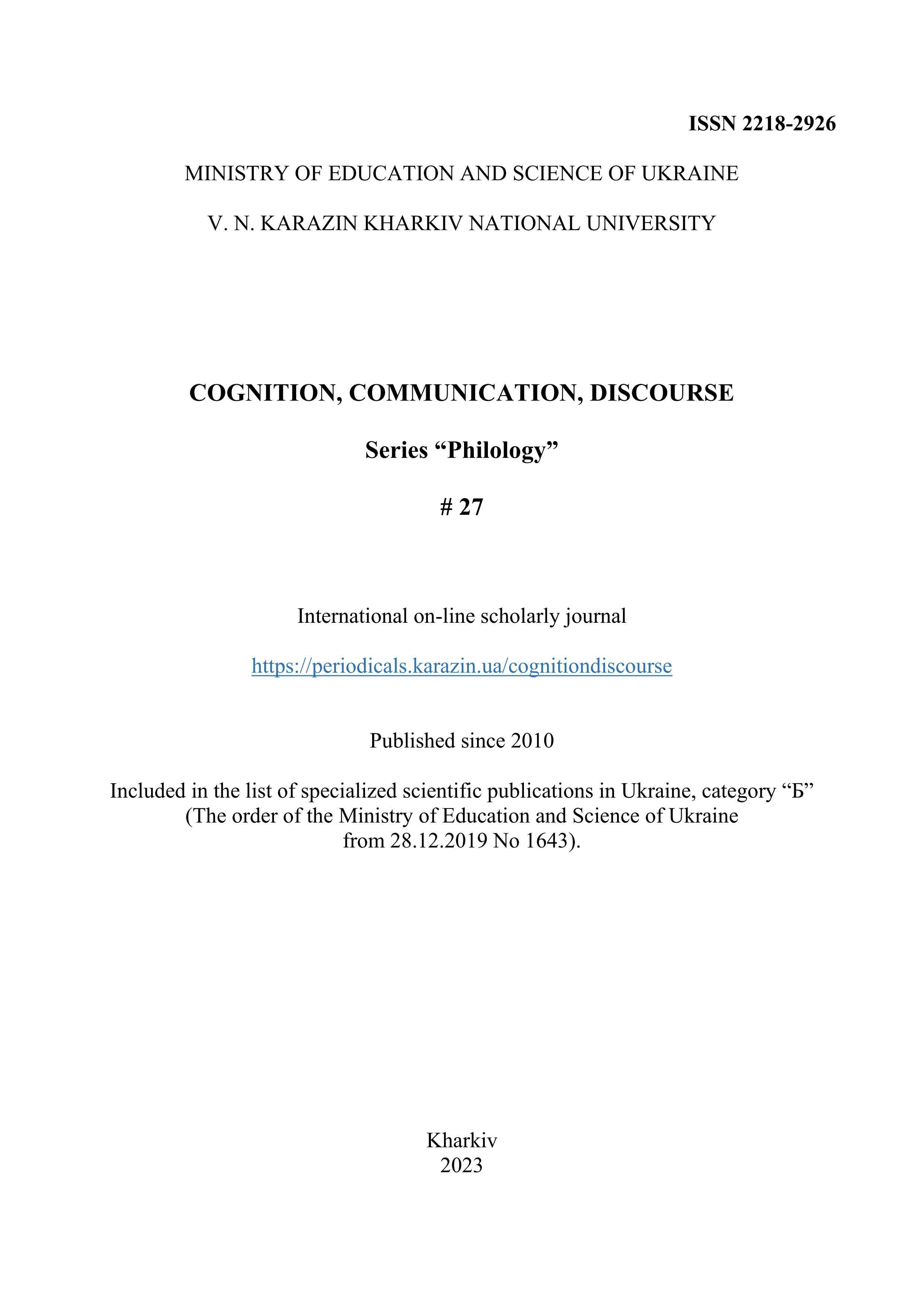Linguistic means of forming euphemisms in the modern Chinese language
Abstract
The article discusses the linguistic means of forming euphemisms in the modern Chinese language and the study of the concept of “euphemism” synchronically and diachronically. Authors highlighted and described several linguistic classifications of euphemisms, presenting the historical prerequisites for their appearance in China, analyzing the connection between taboos and euphemistic vocabulary and formulating the main subject-thematic groups of Chinese euphemisms. Attention is paid to the methods of formation of euphemisms in the Chinese language, including the phonetic allusion, antonomasia, euphemization of certain fixed expressions, metaphor, metonymy. With the help of deductive-inductive analysis and a vast set of examples, authors describe how some foundations of Confucious morality and ethical-ritual traditions in Chinese society led to restriction of the usage for some lexical units and resulted in the emergence of a large number of euphemisms in the Chinese language. The study reveals many factors influencing the usage of euphemisms in the modern Chinese language including the development of society. Special attention in the article is given to the role of euphemism as a universal phenomenon, providing an opportunity for better understanding the culture of the Chinese people and their language and widening the field of effective cross-cultural communication. The authors examined the works of prominent Chinese linguists and emphasized some certain differences in their classifications. The conducted study shows that the phenomenon of euphemism exists in all nations of the world and refers to the same origin but differs in the methods of the research and therefore in the ways of forming certain lexical units.
Downloads
References
Cambridge University Press. doi:10.4000/lexis.1633
Aytan, A., Aynur, B., Hilal, P., Aytac, E., & Malahat, A. (2021). Euphemisms and dysphemisms as
language means implementing rhetorical strategies in political discourse. Journal of Language and Linguistic Studies, 17(2), 741-754. Retrieved from https://search.informit.org/https:https:doi/10.3316/informit.216155432002696
Beiying, L., Jiguang, X. (2022). An analysis of rhetorical strategies in Chinese diplomatic
euphemisms in the context of pragmatic principles. Journal of Sociology and Ethnology, 4, 68-73.
Cao, Y. (2020). Analysis of pragmatic functions of English euphemism from the perspective of
pragmatic principles. Theory and Practice in Language Studies, 10, 1094-1100.
Gomez, M.C. (2009). Towards a new approach to the linguistic definition of euphemism. Language
Sciences, 31, 725–739.
Halliday, M. A. K. (1978/2016). Language as social semiotic. The social interpretation of language and meaning. London: Edward Arnold Ltd.
Holder, R. W. (2008). Dictionary of euphemisms. New York, NY: Oxford University Press.
Hui, Y. (2002). The cultural connotation contrast of Chinese and English euphemism. Journal of Dong jiang,19, 76-79.
Huang, L. (2019). Revisit euphemisms from the perspective of intentionality. Forum for Linguistic
tudies 1(1), 102–111. doi:10.18063/FLS.V1I1.1084
Linfoot-Ham, K (2005). The linguistics of euphemism: a diachronic study of euphemism
formation. Journal of Language and Linguistics, 4(2), 227-263.
Lai, Hl., & Chen, Yc. (2019). Chinese metaphorical expressions in talking about the end-of-life
journey. In H. Tao, & Hl. Chen (Eds.), Chinese for Specific and Professional Purposes (pp. 189-212). Singapore: Springer. doi:10.1007/978-981-13-9505-5_9
Lee, H.-Y. (2020). Linguistic politeness in the Chinese language and culture. Theory and Practice
in Language Studies, 10(1), 1-9. doi:10.17507/TPLS.1001.01
Li, D. (2009). On the characteristics and communicative functions of euphemism in English.
Journal of Liaoning Academy of Governance, 11(7), 152-153.
Lu, W. Z., & Kong, S. J. (2006). The role of metonymy in the formation of euphemism. Foreign
Languages Research, 6, 17-20.
Luo, R. (2018). A study on Chinese LIFE metaphors from corpus-based approach
NeuroQuantology ,16, 67-75. doi:10.14704/nq.2018.16.5.1240
Qian, X. (2020) A tentative study on English euphemism. Journal of Contemporary Educational
Research, 4, 9-12.
Shao, J. H., & Fan, W. W. (2004). Cognitive linguistic explanation of euphemism mechanism. Foreign Languages Research, 4, 20-24.
Wang, H., Zhang, Y., & Salasiah, C. (2023). Euphemism translation from the perspective
of functional context. Migration Letters, 20(S1), 850–861. Retrieved from https://migrationletters.com/index.php/ml/article/view/3638
Wang, X.,, Zhang, M., & Dong, H. (2012). Crosscultural contrastive study of English and Chinese euphemisms. CrossCultural Communication, 8(6), 66-70. Retrieved from:
http://www.cscanada.net/index.php/ccc/article/view/j.ccc.1923670020120806.1356
Williams, J. M. (1975). Origins of the English Language: A Social and Linguistic History. New York, NY: Free Press.
Wu, S. M., & Yang, S. X. (2009). On the characteristics and communicative functions of
euphemism in English. Journal of Liaoning Academy of Governance, 11(7), 152-153.
Zhang, Gonggui 张拱贵 (1996). Hanyu Weiwanyu Cidian 汉语委婉语词典 [A Dictionary of Chinese Euphemisms]. Beijing: Language and Culture University Press.
Copyright (c) 2023 Naumenko Stanislav, Kryvonis Maksym

This work is licensed under a Creative Commons Attribution-NonCommercial-NoDerivatives 4.0 International License.
Authors, who publish with this journal, accept the following conditions:
The authors reserve the copyright of their work and transfer to the journal the right of the first publication of this work under the terms of the Creative Commons Attribution License (CC BY), which allows other persons to freely distribute a published work with mandatory reference to the authors of the original work and the first publication of the work in this journal.
Authors have the right to enter into separate additional agreements for the non-exclusive dissemination of the work in the form in which it was published by this journal (for example, to post the work in the electronic institutions' repository or to publish as part of a monograph), provided that the link to the first publication of the work in this journal is given.
The journal policy allows and encourages the authors to place the manuscripts on the Internet (for example, in the institutions' repositories or on personal websites), both before the presentation of this manuscript to the editorial board and during review procedure, as it contributes to the creation of productive scientific discussion and positively affects the efficiency and dynamics of citing the published work (see The Effect of Open Access).




